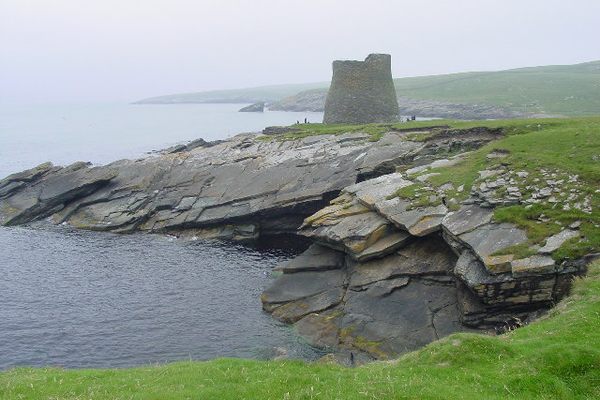Dumbarton Rock
This volcanic plug boasts the longest recorded history of any Scottish stronghold.
According to legend, when Saint Patrick decided to take his preaching overseas from Scotland, the Devil tried to thwart his plans by throwing a gigantic rock at his boat. He missed, and the saint journeyed to Ireland and converted the natives to Christianity and got rid of all the snakes. The huge rock is still there; a 240-foot-tall (73-meter-tall) volcanic basalt plug jutting from the River Clyde.
Humans have long gravitated toward the storied rock. It was at the heart of the ancient Kingdom of Strathclyde, and has the longest recorded history of any stronghold in Scotland. It has been a royal residence, a fortress, and is now a fine example of 18th-century Georgian military architecture.
A stream of fascinating historical characters have traveled to the rock. The legendary Merlin is said to have stayed there when it was known as Alt Clut. Vikings raided it in the ninth century. Sir William Wallace, a leader of the First War of Scottish Independence, was taken there in the early 14th century. Mary, Queen of Scots, stayed on the rock briefly before sailing to France as a child in 1548. The poet William Wordsworth and his wife visited in 1803.
Today, people continue to visit this centuries-old royal refuge. Climb the 500 steps of the Tower Crag, and you’ll be rewarded with magnificent views of the Scottish countryside.
Know Before You Go
Dumbarton is easy to reach by train or bus from Glasgow. Sometimes the castle is closed due to adverse weather conditions. Check with the website before visiting to ensure it's open. There is an entrance fee. Because you must climb stairs to reach the castle, it isn't really suitable for anyone with mobility issues.



















Follow us on Twitter to get the latest on the world's hidden wonders.
Like us on Facebook to get the latest on the world's hidden wonders.
Follow us on Twitter Like us on Facebook